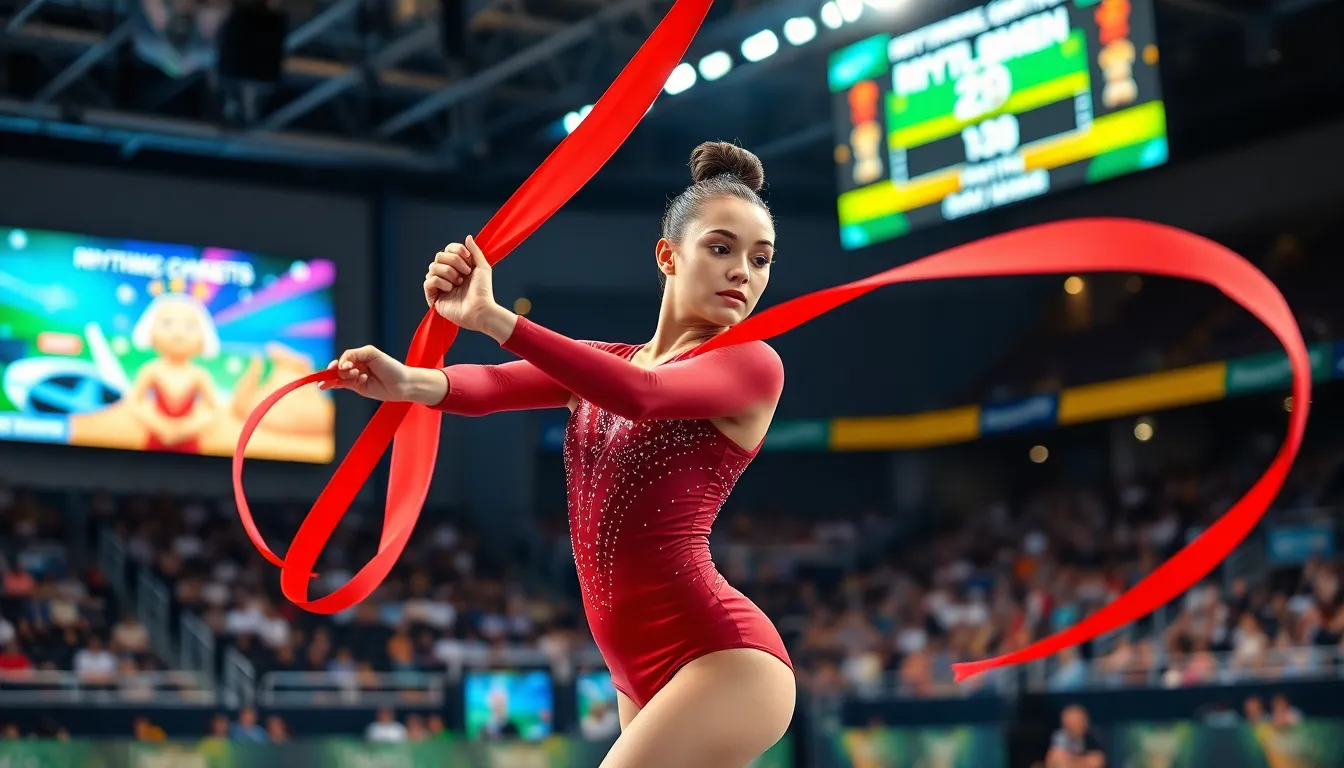As rhythmic gymnastics continues to capture the hearts of audiences worldwide, it remains a dynamic sport characterized by its blend of athleticism, artistry, and precision. In recent years, there have been significant developments both on and off the mat, from exciting competitions to evolving techniques and athlete welfare. This article delves into the latest buzz in rhythmic gymnastics, focusing on key events, trends, and the future of this captivating sport.
Table of Contents
ToggleOverview of Rhythmic Gymnastics

Rhythmic gymnastics combines elements of ballet, dance, and gymnastics, where individual athletes or groups perform routines using various apparatus such as ribbons, hoops, balls, clubs, and ropes. Originating in the early 20th century but gaining prominence in the 1980s, this sport is governed by the International Gymnastics Federation (FIG) and features prominently in major competitions like the Olympics and World Championships.
The essence of rhythmic gymnastics lies in its ability to convey emotion through movement, while adhering to strict technical requirements. Athletes are judged on their choreography, execution, and artistry, making it as much a performance as it is a display of skill.
Recent Championships and Competitions
The past year has been a thrilling period for rhythmic gymnastics, marked by several high-profile championships and competitions that have showcased the sport’s top talent.
Highlights of Top Athletes
The 2025 World Rhythmic Gymnastics Championships held in Sofia, Bulgaria, were a particular highlight, with established stars like Dina Averina and Linoy Ashram leading the competition. Averina, known for her flawless technique and artistic flair, captured multiple gold medals, further solidifying her status as one of the sport’s all-time greats. Meanwhile, Ashram, the 2021 Olympic champion, thrilled fans with her innovative routines, which combined traditional elements with modern choreography.
Emerging Stars to Watch
As seasoned athletes continue to shine, a new generation is rising through the ranks. Athletes like Kaho Minagawa from Japan and Arina Averina (Dina’s twin sister) are making headlines with their impressive performances and unique styles. Their ability to adapt quickly to new techniques and maintain composure under pressure suggests a bright future for these newcomers in the competitive world of rhythmic gymnastics.
Trends in Rhythmic Gymnastics Techniques
Rhythmic gymnastics is a continuously evolving sport, with techniques adapting to showcase greater complexity and artistry. Several trends are shaping the landscape of this discipline:
- Increased Difficulty Levels: Routines have become more challenging, as athletes incorporate higher levels of difficulty in their movements while maintaining grace and fluidity. This evolution requires extensive training and mental resilience, making the sport even more riveting.
- Fusion of Styles: There has been a noticeable trend toward blending street dance and contemporary styles with traditional rhythmic gymnastics. Athletes are embracing different influences, creating routines that appeal to younger audiences and expand the sport’s reach.
- Focus on Individual Expression: As choreography becomes more personalized, individuality is celebrated in routines. This trend encourages athletes to infuse their performances with personal flair and storytelling, enhancing viewer engagement.
Injury Management and Athlete Wellbeing
The physical demands of rhythmic gymnastics can lead to a range of injuries, from sprains to overuse syndromes. As the sport grows in popularity, so does the importance of managing these risks effectively. Recent initiatives in injury prevention and athlete wellbeing are becoming integral to training programs.
- Strength and Conditioning: Many coaches are now incorporating strength training and preventive exercises into their routines, focusing on core stability and flexibility to reduce injury risks.
- Mental Health Awareness: Recognizing the mental challenges athletes face, federations are increasingly prioritizing mental health resources. Workshops and counseling services are being offered to help gymnasts cope with the pressures of competition and performance anxiety.
The Future of Rhythmic Gymnastics
Looking ahead, rhythmic gymnastics is poised for significant changes as more attention is drawn to athlete training and competition formats.
- Technological Innovations: The integration of technology, such as AI-assisted coaching tools and performance analytics, is becoming more prevalent. These tools allow coaches to analyze their athletes’ performances in real-time, enabling more precise training methods.
- Increased Global Participation: Countries that traditionally have not been strong in rhythmic gymnastics are beginning to invest in their programs, leading to an influx of diverse talent. This is predicted to enhance the competitiveness of future events, promoting a richer tapestry of styles and performances.
- Sustainability in Competitions: With a growing global focus on sustainability, there is hope that rhythmic gymnastics competitions will incorporate more eco-friendly practices, from event logistics to athlete attire, aligning the sport with broader societal values.
Conclusion
As rhythmic gymnastics evolves, it continues to inspire with its unique blend of grace, athleticism, and artistry. Recent championships have highlighted both established champions and promising newcomers, while the sport itself is embracing new techniques and trends that enhance its appeal. With ongoing efforts to prioritize athlete wellbeing and the integration of innovative practices, the future of rhythmic gymnastics looks bright, paving the way for even more spectacular performances in the years to come.
